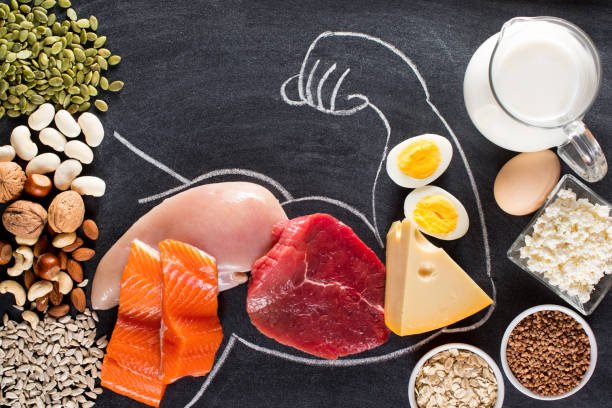
For vegetarians, building muscle sometimes becomes a difficult process because most of the muscle-building advice is associated with animal-based protein. Well, here's the good news: vegetarian diets are rich in protein sources to help you achieve your goal. Whether you are an ardent gym-goer or just want to become stronger in general, you should understand your protein sources and the right strategies for the task. In this blog, Let’s dive into five essential strategies that turn Nutritious Indian Vegetarian Food to Boost Your Protein Intake into a powerful tool for muscle-building.
Strategy 1: More high-protein legumes and pulses
Legumes and pulses, lentils, chickpeas, black beans, kidney beans; they're packed with proteins, fiber, and are full of vital nutrients, keeping you feeling fuller longer, and also incredibly versatile for breakfast, lunch, or dinner.
How to Apply this:
Lentils: Boil them spiced up for a soothing dal or mix in soups and stews.
Chickpeas Roast them as a crunchy snack, puree them into hummus, or add them to a salad.
Beans: Use them as a base for chili or mix them with brown rice for a protein-packed bowl.
Pro Tip: Legumes combined with whole grains, such as rice or quinoa, will help make a complete protein profile to give you all the amino acids your muscles need to recover and grow.
Strategy 2: Go Nuts for Nuts and Seeds
Nuts and seeds provide not only great protein content but also healthy fats to support recovery. Good sources of protein for a vegetarian diet are almonds, peanuts, chia seeds, and flaxseeds and can be easily incorporated into your diet.
How to Apply this:
Almonds and Walnuts: Perfect for an on-the-go snack, in smoothies, or even chopped up in salads.
Chia seeds and flaxseeds It can be added to smoothies, oatmeal, or even yogurt for increasing protein and fiber.
Peanut Butter: Spread on whole-grain bread, add to smoothies, or mix into oats.
Pro Tip: Select unsalted, raw varieties for maximum nutritional benefits. Chia and flaxseeds also contain a high amount of omega-3s; this is essential for anyone who might not be consuming enough from fish-based products.
Strategy 3: Don't Ignore the Dairy Superfoods
A fantastic base for smoothies and have protein and calcium levels high enough to support both muscle function and bone strength. They are full proteins, meaning they will be assisting in repairing and building the muscles as part of a vegetarian diet.
How to Apply this:
Greek Yogurt: Awesome base for smoothies, a topping for oatmeal, or eaten with fresh fruit and a drizzle of honey.
Paneer: Something found universally in Indian curries but can also be grilled very delicious as a snack.
Cottage Cheese: Mix with fresh veggies for a satisfying high-protein dip or add to salads.
Pro Tip: Opt for low-fat or fat-free versions if you’re trying to limit calorie intake while maximizing protein.
Strategy 4: Use Whole Grains Wisely
Quinoa, amaranth and buckwheat are replete with protein and fibres. These would greatly support rebuilding of muscles for holding up energy levels for work outs. Mixing with grains enhances their musclebuilding effect.
How to Apply this:
Quinoa: Substitute it with rice or pasta, add it to salads, or mix it into soups for a protein boost.
Amaranth: Boiled and seasoned with spices is a good breakfast porridge or mixed into soups and stews.
Buckwheat (Kuttu): Make pancakes or stir-fry with vegetables to get a meal full of protein.
Pro Tip: These grains are combined with vegetables or legumes to offer more balanced nutrition and a variety in diets.
Strategy 5: Intelligent Augmentation with Plant-Based Protein Powders
Sometimes, it gets really tough to meet up with the protein needs required from food alone, especially for busy people. Plant-based protein powders sourced from sources such as peas, brown rice, and hemp are convenient alternatives to animal-based products.
How to Apply this:
Smoothies: Blend fruits and greens with almond milk for a nice post-exercise shake.
Porridge or Oatmeal: Add it to your morning oats to get a beneficial protein boost.
Baking: Mix into pancake, muffin, or protein bar recipes for an added home-made boost.
Pro Tip: To minimize processing, look for a plant-based protein powder that contains few additives or sugars.
Additional Tips for Higher Protein Absorption:
Balance Your Meals: Include different sources of protein to get a variety of amino acids, the building blocks of muscle.
Proper hydration: Hydration is needed to recover and function suitably in the proteins during processing.
Spread Out Protein Intake: Consumes proteins in one setting rather than spacing them so that the muscles are developed to their best extent at the time.
Conclusion:
All this can be done with these five protein strategies for vegetarians that make all the difference in building muscle and remaining energized. From nutrient-dense legumes to versatile nuts, protein-packed dairy options, and even convenient plant-based powders, vegetarian diets offer so many choices. These choices enable you to prepare delicious muscle-friendly meals without sacrificing your dietary choices. As you include these strategies, remember quality ingredients matter. For easy access, Indian groceries in USA offer a wide selection of traditional, high-quality ingredients perfect for the vegetarian focused on fitness goals. Building muscle as a vegetarian is possible with the right approach—and your journey can be as delicious as it is effective!